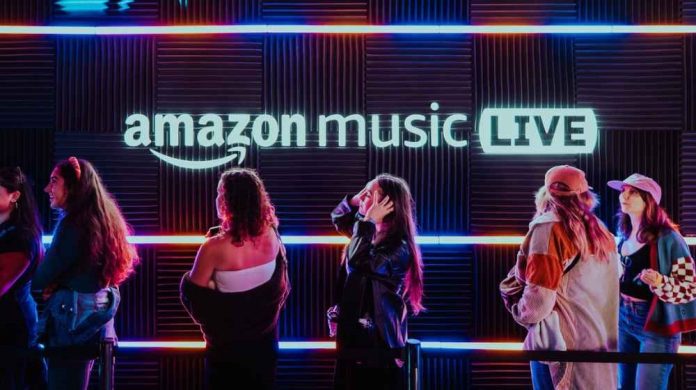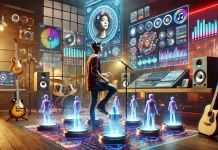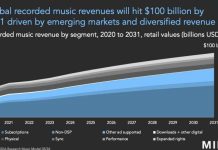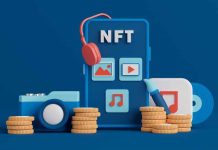
The rise of live streaming has changed how fans consume music and engage with artists. As physical events were curtailed due to the global pandemic, platforms like Amazon Music Live stepped in to fill the void. They created virtual events that aimed to replicate the festival experience. This article examines the impact of live streaming on music consumption and fan engagement, using Amazon Music’s live streams as a case study.
Replicating the Festival Experience Through Live Streaming
Amazon Music’s livestreams seek to recreate the immersive experience of music festivals. They bring the energy and excitement of live performances directly into fans’ homes. These virtual events offer a range of experiences, from intimate acoustic sets to full-scale productions that rival traditional concerts. By leveraging high-quality video and audio, interactive features, and exclusive content, Amazon Music captures much of the festival atmosphere in a digital format. One key benefit of live streaming is accessibility. Fans who could not attend a physical festival due to geographic, financial, or health-related barriers can now participate in these events from anywhere in the world. This democratization of access has expanded the reach of music festivals. It allows artists to connect with a global audience in previously impossible ways.
Enhancing or Altering the Artist-Fan Relationship
While live streams offer new opportunities for connection, they also change the traditional relationship between artists and fans. In a live, in-person setting, the energy exchange between performers and the audience is palpable. This creates a unique and often irreplaceable experience. Livestreaming, on the other hand, introduces a level of separation that can change this interaction. However, Amazon Music’s live streams bridge this gap by incorporating interactive elements. Features like live chats, Q&A sessions, and virtual meet-and-greets allow fans to engage with artists in real time. This fosters a sense of community and direct interaction that can sometimes surpass the accessibility of traditional concerts. For artists, livestreams provide a platform to experiment with new ways of performing and connecting with fans. The flexibility of digital formats allows for creative production choices. These include multiple camera angles, augmented reality, and behind-the-scenes content. Such elements can enrich the viewing experience and provide deeper insights into the artist’s world.
Audience Reactions: Livestreams vs. Traditional Live Performances
Audience reactions to live streams have been mixed. Some fans embrace the convenience and accessibility of virtual events, while others lament the loss of the communal energy that defines in-person performances. Surveys and social media feedback indicate that while livestreams serve as a temporary solution, they are not a complete substitute for live events. Many fans express positive reactions to the interactive elements of livestreams. They note that these features provide unique opportunities to connect with artists in ways that traditional concerts do not. The ability to chat with other fans, ask questions directly to the artist, and participate in virtual meet-and-greets are particularly well-received aspects. Despite some reservations, the majority of fans acknowledge the value of live streams. They appreciate how these events keep the music community connected during challenging times. As technology continues to improve and artists become more adept at using digital platforms, the quality and appeal of livestreams are likely to increase.
The Long-Term Effects on the Music Industry
The long-term impact of live streaming on the music industry is still unfolding. However, several potential trends could shape the future of music consumption and fan engagement. One significant trend is the possibility of hybrid events that combine in-person and virtual elements. This allows fans to choose how they experience a performance based on their preferences and circumstances. For artists, livestreaming presents both challenges and opportunities. It requires them to adapt to new technologies and rethink how they engage with fans. On the other hand, it offers new revenue streams, expanded global reach, and innovative ways to express creativity. The industry as a whole may see a shift towards more frequent and accessible virtual events, even as traditional live performances return. The success of Amazon Music’s live streams suggests a strong appetite for digital experiences, particularly when they are well-produced and offer unique content. As artists and platforms refine their approaches to live streaming, this trend is likely to become a permanent fixture in the music landscape.
Conclusion
Music Industry Weekly recognizes that Amazon Music’s live streams demonstrate the potential of virtual events to replicate the festival experience and transform the relationship between artists and fans. While live streams may never fully replace the energy of traditional live performances, they offer valuable opportunities for connection, accessibility, and innovation. As the music industry continues to evolve, integrating livestreaming into the broader ecosystem will likely play a significant role in shaping the future of music consumption and fan engagement.








